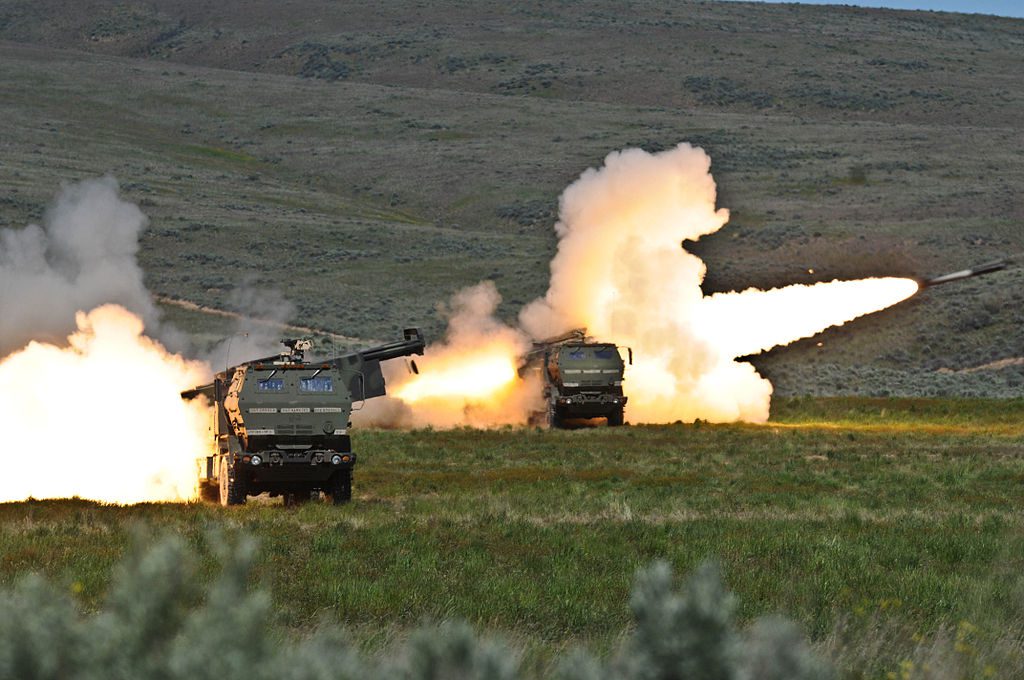
On Friday, Reuters reported that the U.S. was preparing a $1bn package in military aid for war-torn Ukraine. With its approval on Monday, it is now the single largest U.S. package of that kind yet.
Three anonymous sources briefed on the matter had initially told the news agency that the package would include ammunition for High Mobility Artillery Rocket Systems (HIMARS), National Advanced Surface-to-Air Missile Systems (NASAMS), as well as 50 M113 armoured medical vehicles. Their information has now been confirmed.
The armoured medical vehicles would be a boon for wounded Ukrainian troops, as they could more safely be transported to a U.S. military hospital in Germany for further treatment. A massive facility, the Landstuhl Regional Medical Centre for years has treated U.S. soldiers who suffered combat injuries.
The new package comes fresh on the heels of the last one, announced last Monday. At a value estimated at $550m, it includes additional ammunition for HIMARS. To date, the U.S. has sent 16 HIMARS in total to Ukraine. On July 1st, it pledged to send two National Advanced Surface-to-Air Missile Systems (NASAMS) which, as an August 3rd briefing for the press revealed, it has already started to procure. Before this latest package, the U.S. had given $8.8bn in military hardware to Kyiv.
The U.S.-supplied HIMARS, which started arriving in Ukraine this June, have been termed a “gamechanger” by Western officials. With their long range of 300 kilometres, HIMARS have proved highly effective in knocking down over 50 Russian ammunition depots and other strategic targets, such as bridges. Their presence on the battlefield remains of vital importance to Ukrainian forces, who have been suffering a shortage of high-grade military hardware.
On Saturday, the UK Ministry of Defence reported that a “new phase” in the war will soon commence, as Russia is amassing troops in the south, supposedly in preparation for a Ukrainian counter-offensive.
Latest Defence Intelligence update on the situation in Ukraine – 6 August 2022
— Ministry of Defence 🇬🇧 (@DefenceHQ) August 6, 2022
Find out more about the UK government's response: https://t.co/ipwkuIN1lV
🇺🇦 #StandWithUkraine 🇺🇦 pic.twitter.com/cyB1fVrATh
This would mark a pivot, as the bulk of the fighting would then be taking place to the south of Kherson and not in the Eastern Donbas region, where Russia recently made significant gains. Kherson was one of the first major cities to fall to Russia (on March 2nd), and has been held by its forces ever since.

PHOTO: BY GORAN_TEK-EN, CC BY-SA 4.0
Near the end of July, the Ukrainian Defence Ministry put out a statement, which read that the Ukrainian Armed Forces (UAF) were preparing for a large-scale counteroffensive and that any Russian still residing in Kherson had a choice: “retreat or be annihilated.”
Some analysts remain sceptical.
One, former Lt. Col. in the U.S. Army and Senior Fellow for Defence Priorities Daniel L. Davis, concludes these forces would need “three successive military miracles” to be able to pull off such a feat.
